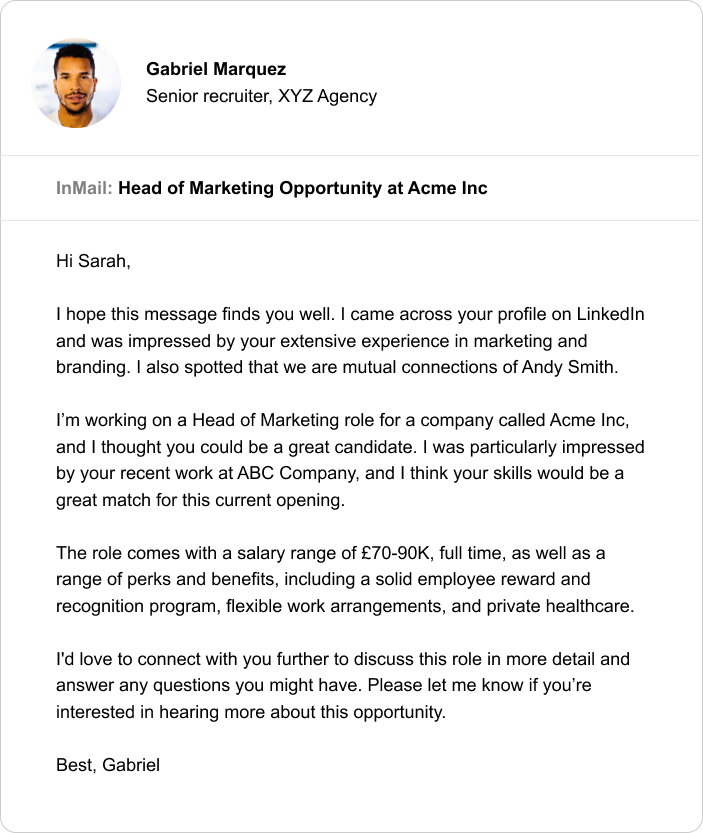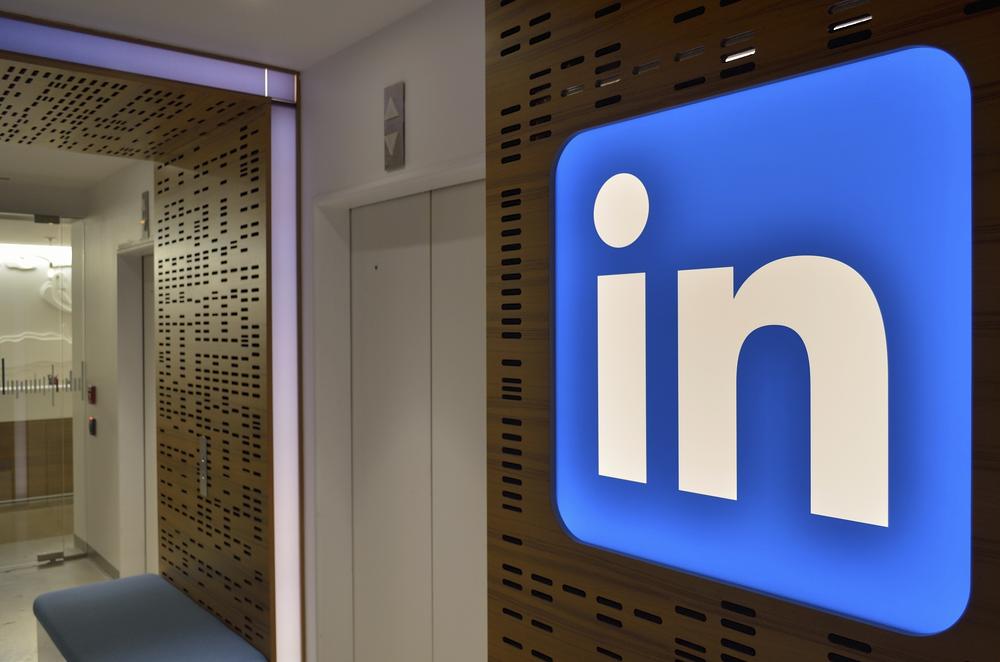We all know how disheartening it can be to list a great job and get hardly any responses. Even the best adverts occasionally fail to generate interest. Or you might be getting plenty of bites but none that are quite the right fit. That’s when some LinkedIn outreach can pay dividends.
Why is recruiter outreach important?
Don’t sit back and hope that the right candidate is going to drop into your lap, get out there and find top talent for yourself. The right outreach message can snag the interest of the kind of top talent that rarely sets out to hunt for a new role.
Accessing these passive candidates offers a real competitive advantage and the opportunity to drastically shorten the amount of time needed to fill empty roles.
What’s so great about recruiting on LinkedIn?
When you’re looking for new and interesting candidates to fill a role, there’s no better place to start than LinkedIn. It’s such a massive and well known professional social networking site, you’re guaranteed of finding all sorts of talent. And when you source potential hires who are truly a good fit, you’re likely to be able to improve retention too.
Your first port of call should be the potential hires who’ve marked themselves as actively looking for a job, but there’s no need to limit yourself to them. In fact, LinkedIn says that an amazing 90% of global professionals want to hear from a recruiter and are open to chatting about potential opportunities.
How to write a good LinkedIn outreach message
While it would be wonderful to have the time to craft a unique and personalised message every time, the smart choice is to create a few flexible templates that you can edit for each candidate.
Here are a few great components for the outreach messages you send on LinkedIn.

1. A strong subject line
When you send a message on LinkedIn, you have the opportunity to include a subject line. If you have any link to the candidate at all, through a previous position or a shared interest, this is the first place to use it. If not, then focus on making it as eye-catching and punchy as possible.
2. Include the potential hire’s name
No one likes to feel as though they’re being targeted blindly, so always be sure to include the name of the person you’re contacting. That extra touch can make a big difference. LinkedIn found that personalised messages performed 15% better than bulk ones.
3. Mention why you chose to target them
Do they have an impressive back record? Have they got interesting hobbies listed on their profiles? Have they worked for the company you’re recruiting for before? Boomerang employees can be a valuable addition to a team. Whatever it was that made you think they were worth contacting, be sure to let them know. A little bit of flattery can go a long way, especially if it’s sincere and shows you’ve paid attention to their profile.
4. Leverage any connections you might have
Have you worked with anyone they know? Have you recruited someone they are friends with? If you find any connections in your network, it’s well worth mentioning the people you have in common. This gives a potential hire more reason to pay attention to your message over and above any they get from other recruiters.
5. Share details of the particular role you’re recruiting for
This can be a tempting stage to skip, but including specifics gives your candidate a better idea of whether connecting is worth their time. A 2023 report from LinkedIn found that 90% of respondees wanted to see the responsibilities in a job advert and 89% wanted to see salary ranges.
Even if they don’t like this particular role, leaving them with a good impression can make it more likely that they’ll respond positively to your messages when a role that does suit them shows up.
6. Give a flavour of the company and its culture
A company’s culture is very important to the majority of potential employees. If you’re able to communicate the values and atmosphere of an organisation, you’re more likely to attract their attention.
7. Highlight any particular perks
If the role has some great perks, like solid employee reward and recognition programs, flexitime, a focus on wellbeing or strong employee development commitments, then be sure to shine a spotlight on them.
8. Add a call-to-action
Give the person you’re contacting a clear reason to get back in touch with you. Tell them when you’d like to hear from them by or ask a question – anything to open a dialogue.
9. Send a friendly follow up
If you don’t hear back, then it’s worth sending a follow up message. Don’t copy and paste your previous message, send a new one and make sure to keep the tone light and breezy. Reiterate that you think they’d be a great candidate for the role and say that you’d love to hear from them if they have time.
10. Choose the right time to send your message
Don’t send recruitment messages out on a Friday afternoon or a Saturday, when candidates are least likely to want to engage. Schedule them for earlier in the week for a better response rate.
Things to watch out for in your outreach messages
There are a few things that are worth avoiding when you send messages too. For example:
- We’ve suggested some great elements to include, but don’t feel as though you have to add them all. Pick a few to highlight in your initial introductory message and use some in the follow ups. If your message is too long, a potential hire might check out before finishing it.
- It’s fine to send a follow up message if you don’t receive a reply. Maybe even two, if you really think they would be the perfect candidate for the job, but don’t be tempted to spam. You’re much more likely to alienate than recruit!
Transform your culture with Mo

- Improve employee engagement scores
- Reduce employee churn
- Build a collaborative culture
Mo is an employee recognition and engagement platform that can help leaders improve collaboration and morale, reduce employee churn and drive change.
Our platform creates a vibrant culture by developing team habits, encouraging people to celebrate success, recognise results and appreciate colleagues.
Your complete toolkit for connecting and motivating teams in the new world of work. Book a demo with our team today!




